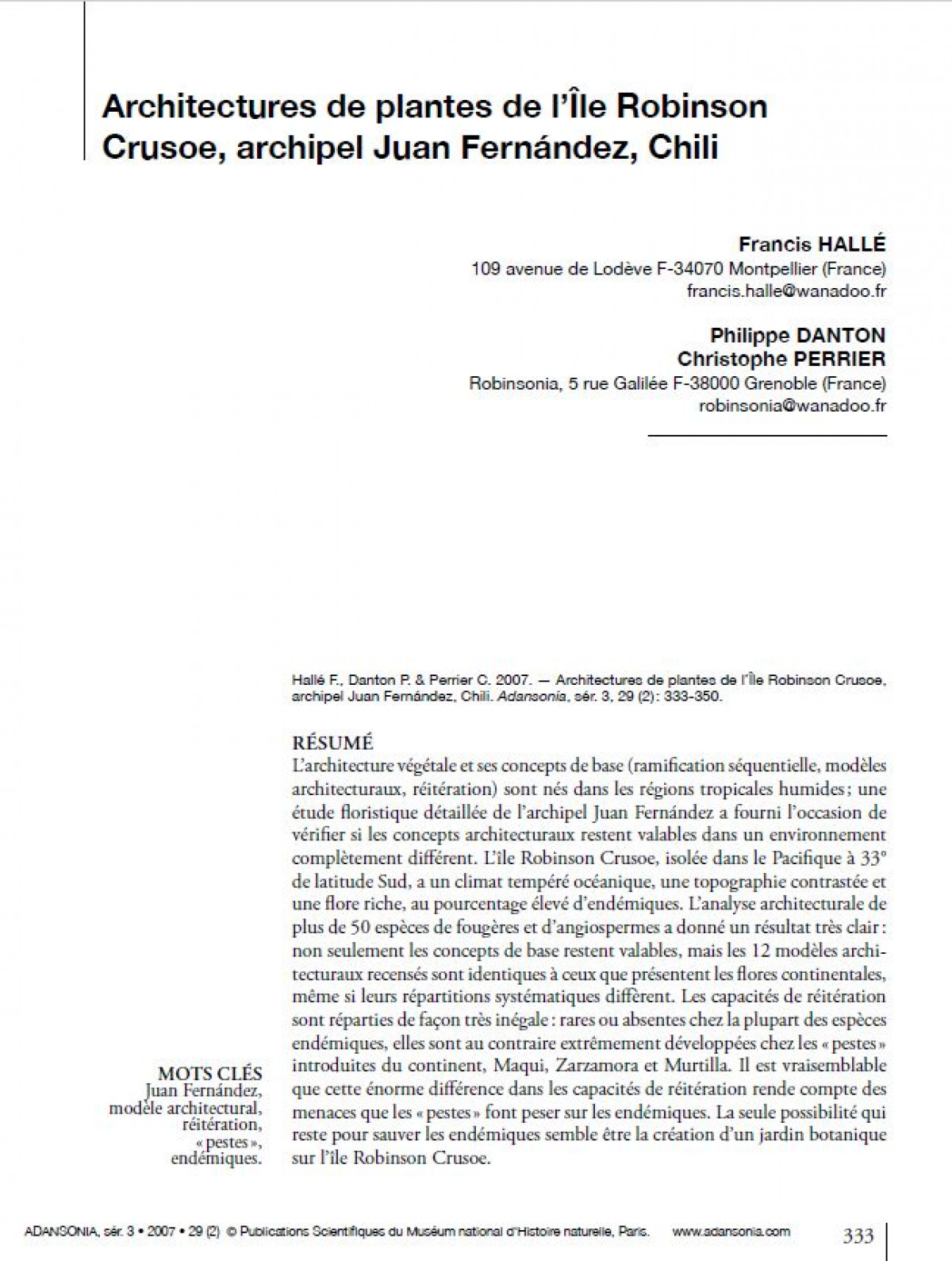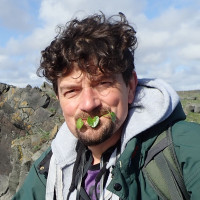Architectures de plantes de l’Île Robinson Crusoe, archipel Juan Fernández, Chili
Home | Tool
Architectures de plantes de l’Île Robinson Crusoe, archipel Juan Fernández, Chili
2007
Summary
Abstra ct Architecture of plants in Robinson Crusoe Island, Juan Fernández Archipelago, Chile. As vegetative architecture and its main concepts (sequential branching, architectural models, reiteration) were born in the humid tropics, a long term study of the Juan Fernández flora and vegetation provided an opportunity to test whether or not those concepts remain valid in quite a different sort of environment. Robinson Crusoe is an isolated island of the South Pacific, at 33° South, having an oceanic temperate climate, a rough topography and a rich highly endemic flora. Through the architectural analysis of more than 50 species of ferns and seed-plants, it is established that, not only are the architectural concepts still valid, but that the 12 architectural models actually recorded are identical to those found elsewhere on mainlands, even if their taxonomic distribution differs. The reiteration ability is unevenly distributed: rare or absent in most of the endemics, it is extremely developed in the “pests” introduced from the mainland, Maqui, Zarzamora and Murtilla. It is shown that such a big difference in reiteration ability is likely to explain the threat that “pests” pose on endemics. The only possibility left to save the endemic flora seems to be the creation of a botanical garden on Robinson Crusoe Island. Résumé L’architecture végétale et ses concepts de base (ramification séquentielle, modèles architecturaux, réitération) sont nés dans les régions tropicales humides ; une étude floristique détaillée de l’archipel Juan Fernández a fourni l’occasion de vérifier si les concepts architecturaux restent valables dans un environnement complètement différent. L’île Robinson Crusoe, isolée dans le Pacifique à 33° de latitude Sud, a un climat tempéré océanique, une topographie contrastée et une flore riche, au pourcentage élevé d’endémiques. L’analyse architecturale de plus de 50 espèces de fougères et d’angiospermes a donné un résultat très clair : non seulement les concepts de base restent valables, mais les 12 modèles architecturaux recensés sont identiques à ceux que présentent les flores continentales, même si leurs répartitions systématiques diffèrent. Les capacités de réitération sont réparties de façon très inégale : rares ou absentes chez la plupart des espèces endémiques, elles sont au contraire extrêmement développées chez les « pestes » introduites du continent, Maqui, Zarzamora et Murtilla. Il est vraisemblable que cette énorme différence dans les capacités de réitération rende compte des menaces que les « pestes » font peser sur les endémiques. La seule possibilité qui reste pour sauver les endémiques semble être la création d’un jardin botanique sur l’île Robinson Crusoe.
Bibliographic citation
Hallé F., Danton P. & Perrier C. 2007. — Architectures de plantes de l’Île Robinson Crusoe, archipel Juan Fernández, Chili. Adansonia, sér. 3, 29 (2) : 333-350.

